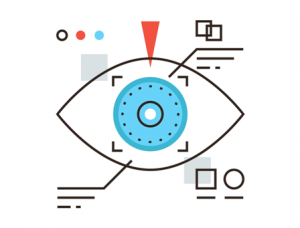Three Cs to Beating the Modern Reader’s Short Attention Span
It’s interesting to note that the way readers view digital content differs from how traditional print media is consumed. A recent study by the Nielsen Norman Group, which tracked the eye motions while reading online content reveals an F-shaped pattern – two horizontal stripes followed by a single vertical one. F for fast, apparently, as the study demonstrates that in a matter of seconds, a reader’s eyes are able to scan the entire web page.
This new information is useful to writers, particularly, as it serves as a starting point to learning how to create content that caters to the modern internet user. This also puts emphasis on the importance of brevity and quality in content creation.

When it comes to writing, it’s important to know your readers’ behavior, to effectively communicate what you’re trying to say.
Now that you know how fast a reader can scan an online copy, here are the three Cs of a blog post or online editorial that make a user’s reading experience easier and quicker, yet equally enriching and useful.
Being Concise
Shakespeare said that brevity is the soul of wit. As cliché as it may seem, it’s true, especially in the context of digital content. As the study proves, readers don’t take much time to breeze through an article, so it’s important to say what you need to say within that short period of time.
Scratch out the lengthy introductions, the long winded sentences, the circular reasoning, and the use of fluffy, flamboyant words in an attempt to sound more intelligent. This doesn’t do you any favors or earn you points in the eyes of a typical web surfer.
If anything, all it does is make them skip reading your article altogether. Stop beating around the bush and get on with the important parts.
Pro tip: Place the important points within the first two paragraphs.
Being Catchy
Let’s face it. Boring stuff on the internet earns the close tab button without a second thought. There’s really no way around it. If your content is bland, people won’t bother to read it. So to keep their already short-spanned attention, you better be interesting.
Think of it as fishing.


Your introduction is the bait that hooks the reader. It should affect them enough to make them stay. The body of your article is your line. Once you’ve reeled them in, you get them closer and closer with all the useful bits of information you share. Your conclusion is the sinker. It may seem less important, but it’s crucial to get it right. You should conclude your article in a way that will make your reader say, “Yeah, that was a really worthwhile read!”
Pro tip: Make sure subheadings or bullets contain words that carry information.
Being Correct
You may have nailed it on conciseness and did great with being catchy, but if what you wrote is actually wrong or misleading, then it’s nothing more than spam. Being correct is important in order to meet your goal of edifying your reader. With that in mind, here’s what you need to know: correctness means being timely, being accurate, and being able to back up all of your claims with facts and reliable sources.
Pro tip: News outfits and online magazines make for great authority sites and references.
Always be aware that the average reader will not read the entirety of your web post, as the recent study proves. But if you keep these Cs in mind when you sign up and write for us, you’ll do just fine.